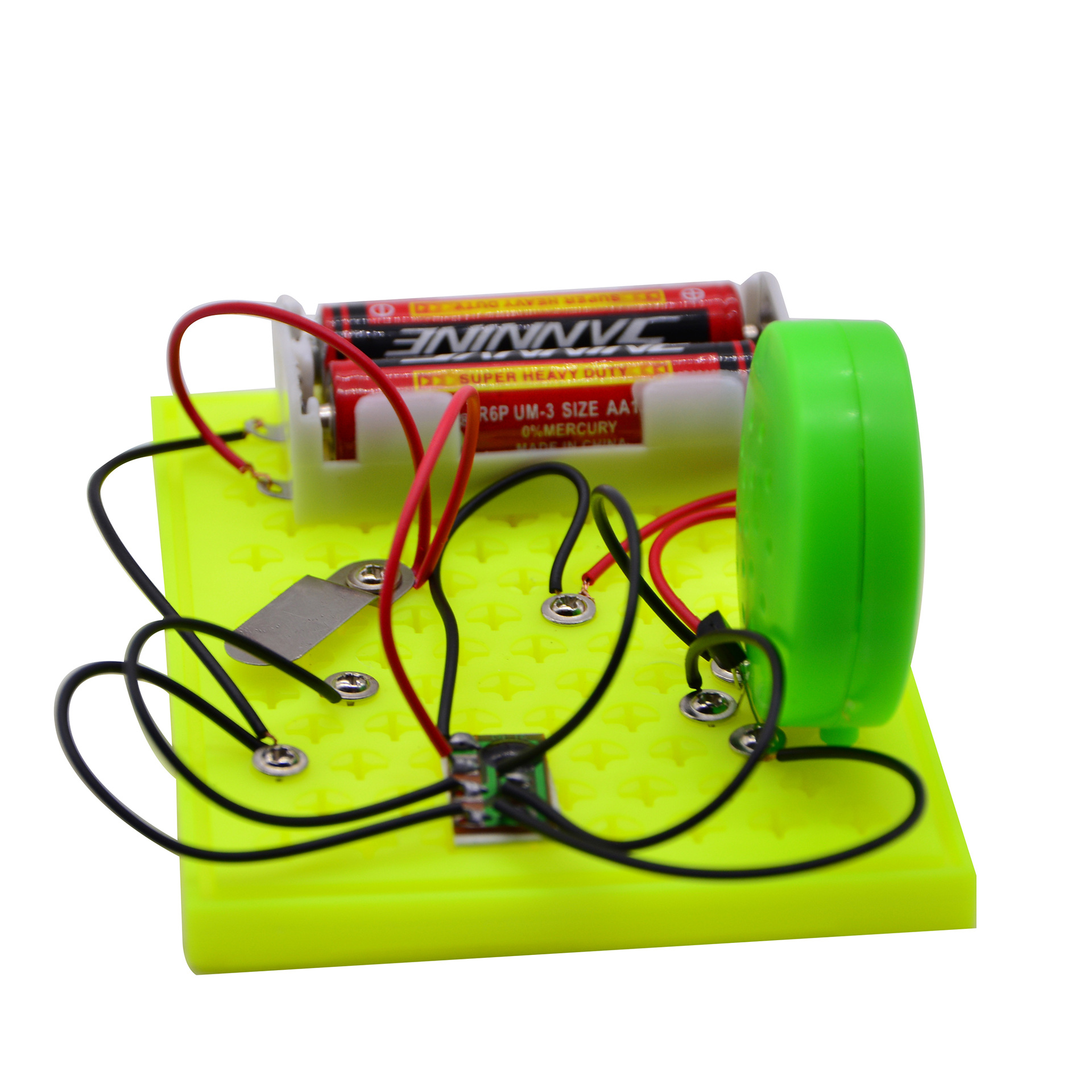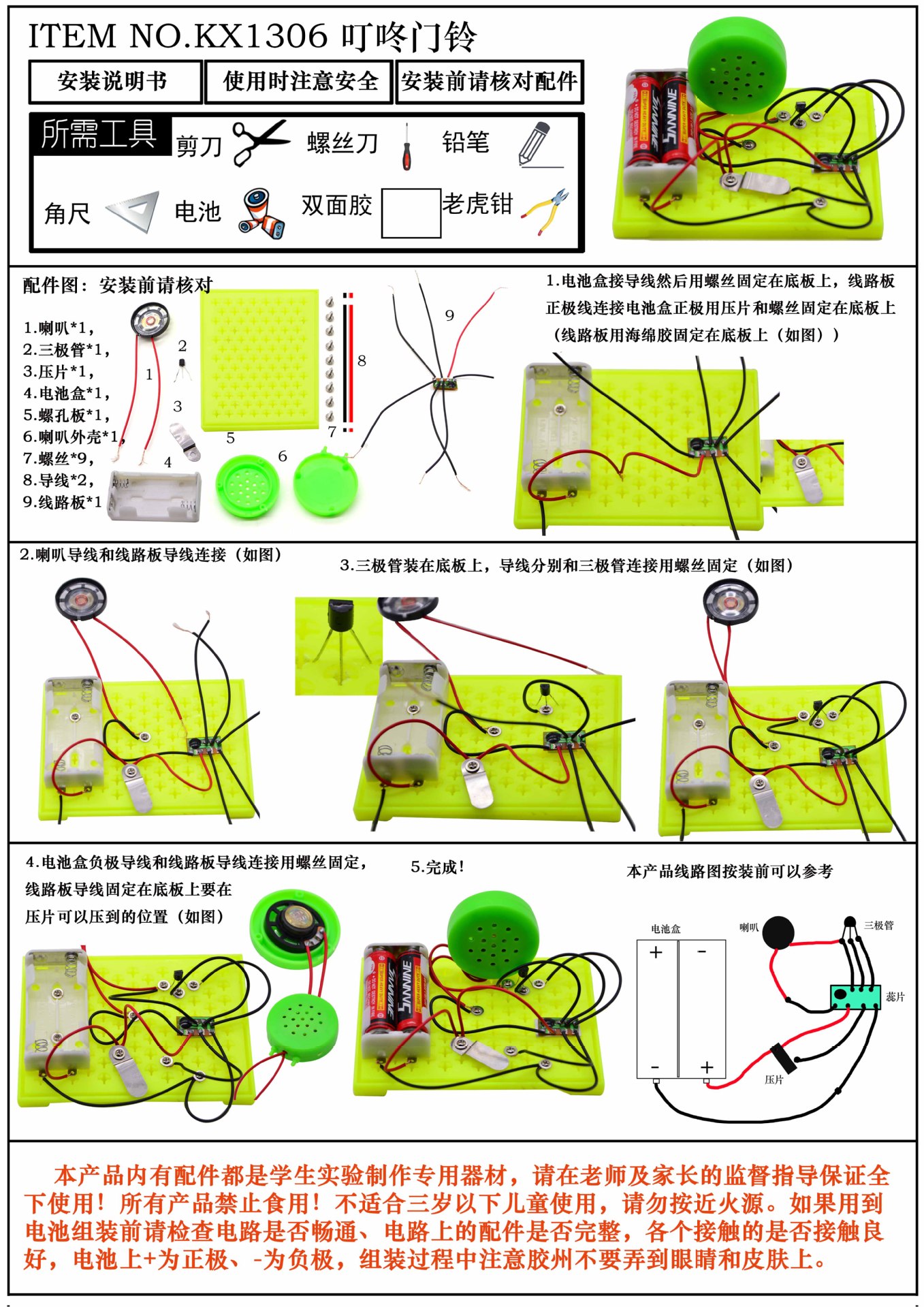
Search history
Clear allSearch by image
XDrag and drop an image here or upload an image
Max 5MB per image
UploadSign In | Join

Search history
Clear allSearch by image
XDrag and drop an image here or upload an image
Max 5MB per image
UploadSign In | Join
X Email Mobile
| kx1306 ding dong doorbell | ¥0.0 | 4956 box available |
|
A new item has been added to your Shopping Cart. You now have items in your Shopping Cart.
Creating the 'DingDong Doorbell' Project Teaching Case
Abstract: Under the guidance of the new curriculum reform concept, project-based teaching method has achieved mature theoretical research, widespread application, and development in China. Major vocational education institutions have begun to adopt project-based teaching methods to cultivate students' practical hands-on ability, social skills, and other key abilities, further laying the foundation for the cultivation of innovative talents.
The course 'Electronic Skills and Practice' is a professional course with strong theoretical, practical, and applied aspects. In order to make it more in line with life and more suitable for the actual situation of students, it emphasizes the good study habits of students' independent learning and problem-finding and problem-solving. It aims to integrate theoretical knowledge with practical ability organically, so I have selected the project 'DingDong Doorbell' for teaching cases in the 'Electronic Skills and Practice' project teaching. Through the joint efforts of teachers and students, we have achieved good results. The teaching design and implementation process are briefly introduced as follows:
Teaching Project
Project Task Content: Use a 555 integrated circuit to create a doorbell with a ding-dong sound.
Production time: 5 hours
Project-based teaching objectives
1. Through the study of this project, students should be able to understand the project task book, understand the circuit principle diagram in the task book, analyze the working principle of the circuit, and clearly define the production evaluation requirements and grading standards based on the project training evaluation.
2. Familiar with the circuit principle diagram and able to draw the circuit principle diagram with Protel99se.
3. Proficient in using a multimeter to check the quality of various components.
4. Proficient in using various welding tools to complete the connection of circuits according to the circuit principles and technical requirements.
5. Proficient in using electronic measurement tools to complete the debugging of circuits and fault elimination.
Project-based teaching implementation
In the educational activities of student activities, the process of student actions as the main body of the activity is as follows:
1. Accept the project assignment and analyze the tasks (approximately 1 teaching hour). Each group leader distributes the project task book to students, requiring them to read the tasks and requirements in the book carefully, and clearly understand the indicators of each task.
2. Prepare the tools (approximately 1 teaching hour). Collect the materials, equipment, and computer needed for the production of the DingDong doorbell, prepare the production tools, and make all necessary preparations. Ensure that the personnel are well-organized and that safety measures are in place.
3. Drawing the Schematic Diagram of the Doorbell Circuit (Approximately 1 Hour). Students will go to the Electronic CAD Laboratory to draw the schematic diagram of the doorbell circuit.
4. Making a DingDong Doorbell (approximately 2 teaching hours). Students will identify and test components using a multimeter according to the project task book, complete the installation and connection of the DingDong doorbell circuit using soldering tools, and debug and troubleshoot the circuit using electronic measurement tools. During this process, students are required to work in teams to divide the labor and collaborate to complete the task. For example, male students can be responsible for component testing, female students can be responsible for component shaping, and both male and female students can jointly undertake circuit testing and troubleshooting. In addition, throughout the circuit construction process, the concept of "safety" should always be adhered to, especially when using a soldering iron for soldering operations, it is necessary to pay attention to personal safety, and to strictly follow the 9S management requirements, keep tools and equipment neatly arranged, clean up the work area, pay attention to electrical safety, and carefully fill in the activity records and equipment usage, etc.
5. Project Training Evaluation (approximately 1 teaching hour). After completion, students will first self-evaluate, followed by peer evaluation within the group, and then the teacher will conduct a comprehensive evaluation. The project training evaluation score will be used as part of the regular grade.
6. Summary and Exchange (approximately 1 teaching hour). Students share their experiences and insights on the various problems or situations they encountered during the production process, as well as their performance in their abilities, and engage in summary and exchange with other classmates.
Teacher ActivitiesIn educational activities, the primary role of the teacher is to: develop project task books based on the project, distribute the task books to each group leader, briefly describe the requirements of the task, assist students in preparing the equipment and tools; inspect the circuit principle diagrams drawn by the students; during the production phase, on-site guidance on the use of tools and the installation and testing of circuits; help students solve various problems encountered in the production process; combine the operations and issues that arise in the production process to guide students in learning related knowledge, such as component formation, overall beauty of the circuit, circuit testing, the working principle of 555, technical requirements, etc., striving to integrate theory with practice and theory close to practice. During production, the teacher should also inspect each task of the production process, strictly require the quality of the production process, and record the inspection situation as a reference for evaluating students. After the completion of the production, the teacher should make a comprehensive evaluation of students based on aspects such as the use of tools and instruments, component installation, wiring technology, self-learning and management, application of learned knowledge to solve practical problems, team collaboration, mutual communication, safety awareness, habits, and knowledge mastery. The teacher should also provide guidance and correction for the errors. In addition, the teacher should also







Update time:
TOP